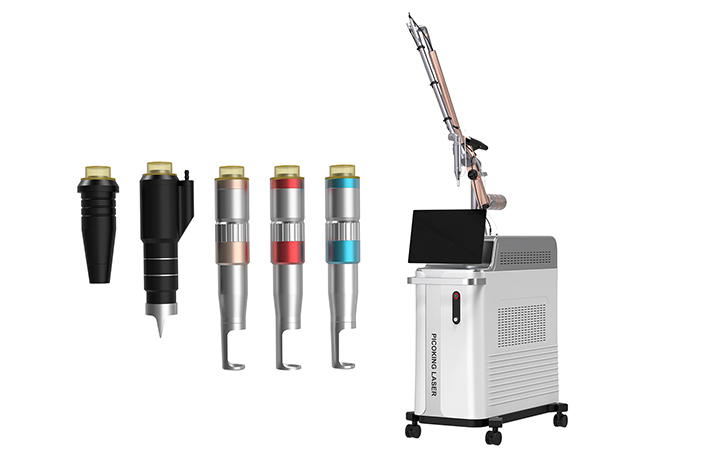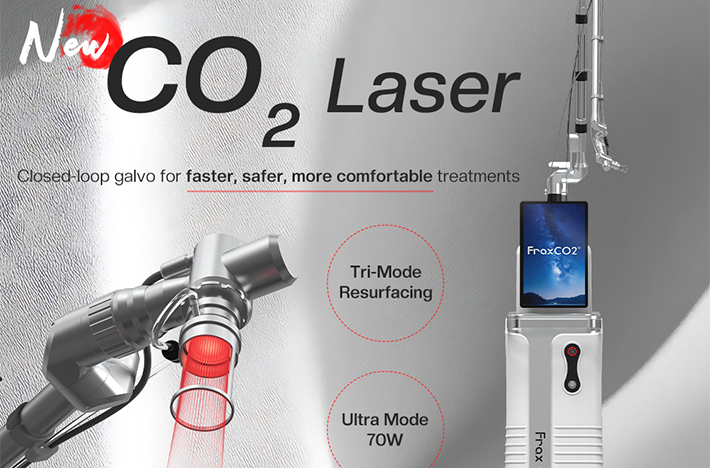The Professional’s Guide: Essential Features in a Picosecond Laser Tattoo Removal Machine
What Is a Picosecond Laser Tattoo Removal Machine?
A picosecond laser tattoo removal machine is a high-end medical device that delivers ultra-short light pulses—each lasting just picoseconds (one trillionth of a second)—to break down tattoo pigments in the skin without damaging surrounding tissue. Compared to older nanosecond lasers, picosecond systems create a powerful “photoacoustic effect,” where rapid pulse energy causes tattoo ink to expand and fragment into tiny particles. These are then naturally eliminated by the body’s immune cells, making removal faster and more comfortable.
For practitioners, this means the ability to treat a wider range of ink colors—from dark black and blue to challenging green and yellow—in fewer sessions. Studies show that picosecond lasers can reduce total treatment time by 30–50% compared to traditional Q-switched Nd:YAG lasers. If you run a clinic or specialize in aesthetic treatments, understanding this technology will help you see why it’s a worthwhile investment that can improve client satisfaction and grow your revenue.
.jpg)
Why Picosecond Lasers Are Superior to Older Technologies
The transition from nanosecond to picosecond lasers marks a major step forward in cosmetic technology, where pulse duration determines both safety and effectiveness. Traditional Q-switched nanosecond lasers often produce excess heat, increasing the risk of burns, hyperpigmentation, or scarring. Picosecond lasers reduce this risk by concentrating energy more precisely into the ink particles.
Notable benefits include:
-
Fewer Treatments Required: Patients see visible improvement after just 2–4 sessions, improving retention and satisfaction.
-
Multiple Applications: In addition to tattoo removal, these devices treat pigmentation issues, melasma, and support skin rejuvenation.
-
Safe for All Skin Types: Suitable for Fitzpatrick skin types I through VI, including darker skin with reduced side effect risks.
In professional settings, picosecond lasers are increasingly considered the standard, particularly in clinics offering premium services. When selecting a machine, look for models that include Q-switched modulation technology, such as those available on the Winkonlaser products page.
.jpg)
Key Technical Specifications to Evaluate
When selecting a professional-grade picosecond laser tattoo removal machine, pay close attention to the following technical parameters—they determine the device’s performance, flexibility, and reliability.
Pulse Energy and Peak Power
Peak power, often measured in megawatts (MW), is central to the laser’s effectiveness. For reliable tattoo removal, choose a system that offers at least 1–2 J/cm² in picosecond mode. Higher energy output ensures fragmentation of difficult pigments, such as reds containing iron oxide.
Modern devices, like the 2025 Picosecond Laser by Winkonlaser, provide high power levels that ensure consistent results. Whenever possible, test the equipment to confirm stable energy delivery during extended use.
Multiple Wavelengths for Full Versatility
Wavelength selection is crucial for targeting different tattoo colors. A professional system should include:
-
1064 nm: For deep penetration, ideal for black and blue pigments.
-
532 nm: Targets red, orange, and brown pigments in superficial layers.
-
755 nm: Effective on green and yellow inks, commonly found in decorative tattoos.
Optional wavelengths such as 585 nm or 650 nm can also support vascular treatments. A high-quality device allows quick and easy switching between wavelengths without losing power, enabling one machine to replace several older units—saving both space and budget.

FDA and CE Certifications: Ensuring Safety and Compliance
In a professional clinic, certifications are not just paperwork—they are essential for building trust with clients and meeting regulatory requirements. Look for picosecond lasers that are FDA-cleared (for the U.S. market) and CE-marked (for Europe), as these confirm adherence to strict safety and performance standards. Additional certifications like ISO 13485 for quality management and RoHS for environmental safety are also valuable.
These credentials help minimize legal and insurance risks. In many regions, including Europe and Russia, CE certification is mandatory for importing medical devices. Always verify that the manufacturer holds patents or validated technology for core components like the Q-switch system.
.jpg)
Handpieces and Accessories: Enabling Diverse Treatments
A wide selection of handpieces is another key feature of a professional picosecond laser system. High-quality devices often include imported components, such as Korean-made laser tips, for better precision and durability.
-
Standard Tattoo Handpiece: Offers adjustable spot sizes (2–10 mm) and repetition rates of 1–10 Hz, ideal for treating large areas quickly.
-
Fractional Handpiece: Used for skin resurfacing, scar treatment, and improving skin texture.
-
Collimated Handpiece: Designed for skin rejuvenation, addressing fine lines, wrinkles, and pigmentation.
These accessories allow clinics to expand their service menu—from tattoo removal to acne scar treatment and photoaging correction. In advanced systems that include built-in water cooling, such as Winkonlaser’s multifunctional devices, handpieces remain cool during extended use, improving both safety and user comfort.
Cooling Systems and Ergonomic Design
An integrated cooling system is vital for long treatment sessions. It prevents handpiece overheating, protects internal components, and reduces the risk of patient burns. Lightweight, ergonomically designed handpieces with adjustable balance help minimize operator fatigue and improve treatment accuracy.
About Winkonlaser: Your Partner in Aesthetic Technology
Winkonlaser, formally known as Beijing Wenkang Laser Technology Co., Ltd., is a leading global manufacturer of professional cosmetic and medical aesthetic equipment. Established in 2012, the company has over 12 years of industry experience and serves clients in 120 countries, supported by warehouses in China, the USA, France, and Turkey. Specializing in advanced laser technologies, Winkonlaser offers a diverse portfolio of more than 50 devices, including the AresLite and FraxCO2 series, with OEM and ODM services available. The company is committed to innovation and safety, holding international certifications such as FDA, CE, ISO 13485, and others. By participating in exhibitions worldwide and offering flexible payment options with a 72-hour refund guarantee, Winkonlaser focuses on customer satisfaction and long-term partnerships. Learn more on the About Us page.
Choosing the Right Picosecond Laser for Your Clinic
Selecting a picosecond laser involves more than just technical specs—consider how it will fit into your daily operations. Key factors include power consumption (under 2 kW/h is efficient), portability (under 50 kg is manageable), and user-friendly software for session tracking. High-volume clinics may prefer models with automatic calibration.
Budget considerations: Entry-level systems range from $50,000 to $80,000 USD, while premium models start at around $100,000. A simple ROI calculation—assuming 20 sessions per month at $300 per session—shows that the investment can be recovered within 6 to 12 months.
Frequently Asked Questions (FAQ)
How does a picosecond laser tattoo removal machine work?
It uses ultra-short pulses to create a photoacoustic effect that breaks down ink particles without significant heat, allowing the body to remove them naturally and with minimal skin damage.
Which wavelengths are most important in a professional picosecond laser?
The essential wavelengths are 1064 nm (for dark colors), 532 nm (for reds and browns), and 755 nm (for greens and yellows). Together, they cover the majority of tattoo pigments.
Why are FDA and CE certifications important?
They confirm that the device meets high safety and performance standards, reducing risks for patients and practitioners while ensuring regulatory compliance.
How many sessions are typically needed for full tattoo removal?
Most tattoos require 3 to 6 sessions, depending on their size, color, and age. Treatments are usually spaced 4 to 6 weeks apart.
Can a picosecond laser be used for other skin treatments?
Yes. With the appropriate settings and handpieces, it can effectively treat pigmentation disorders, fine lines, and overall skin rejuvenation.
Ready to Upgrade Your Clinic?













Leave a Reply
You must be logged in to post a comment.